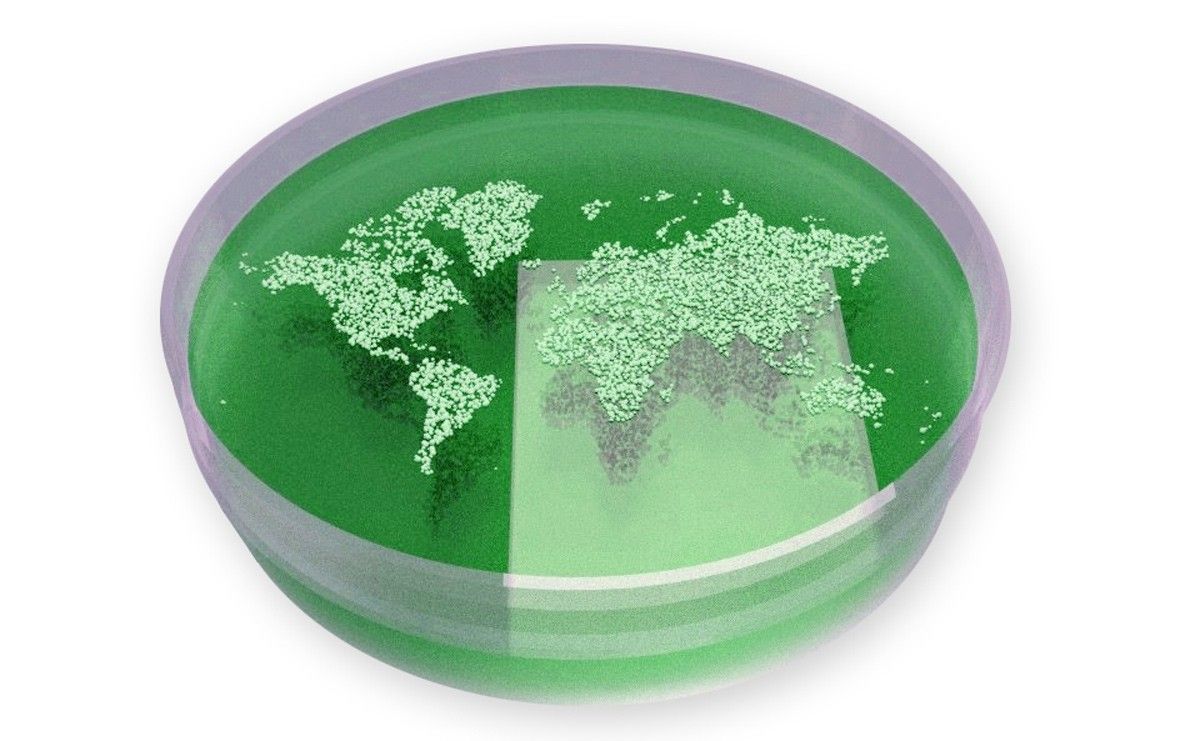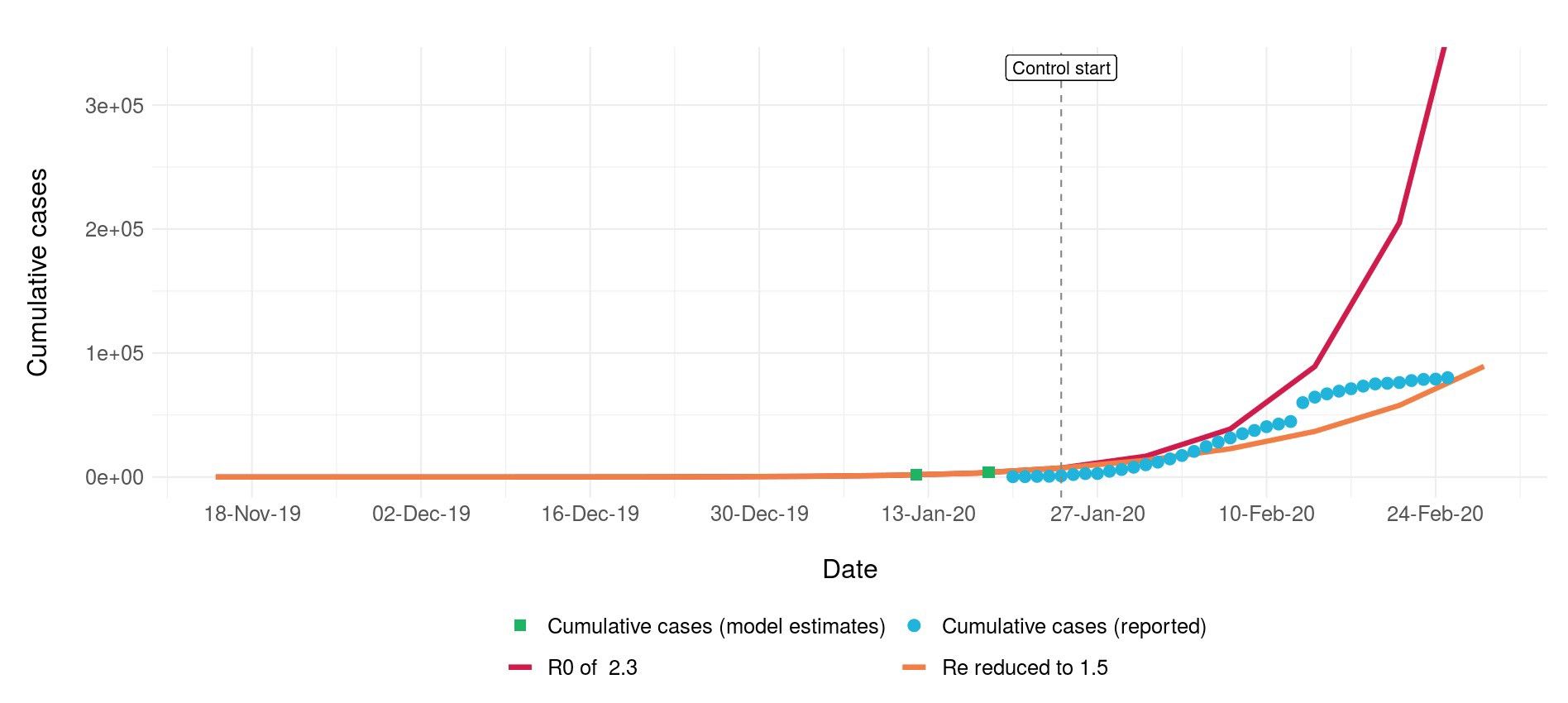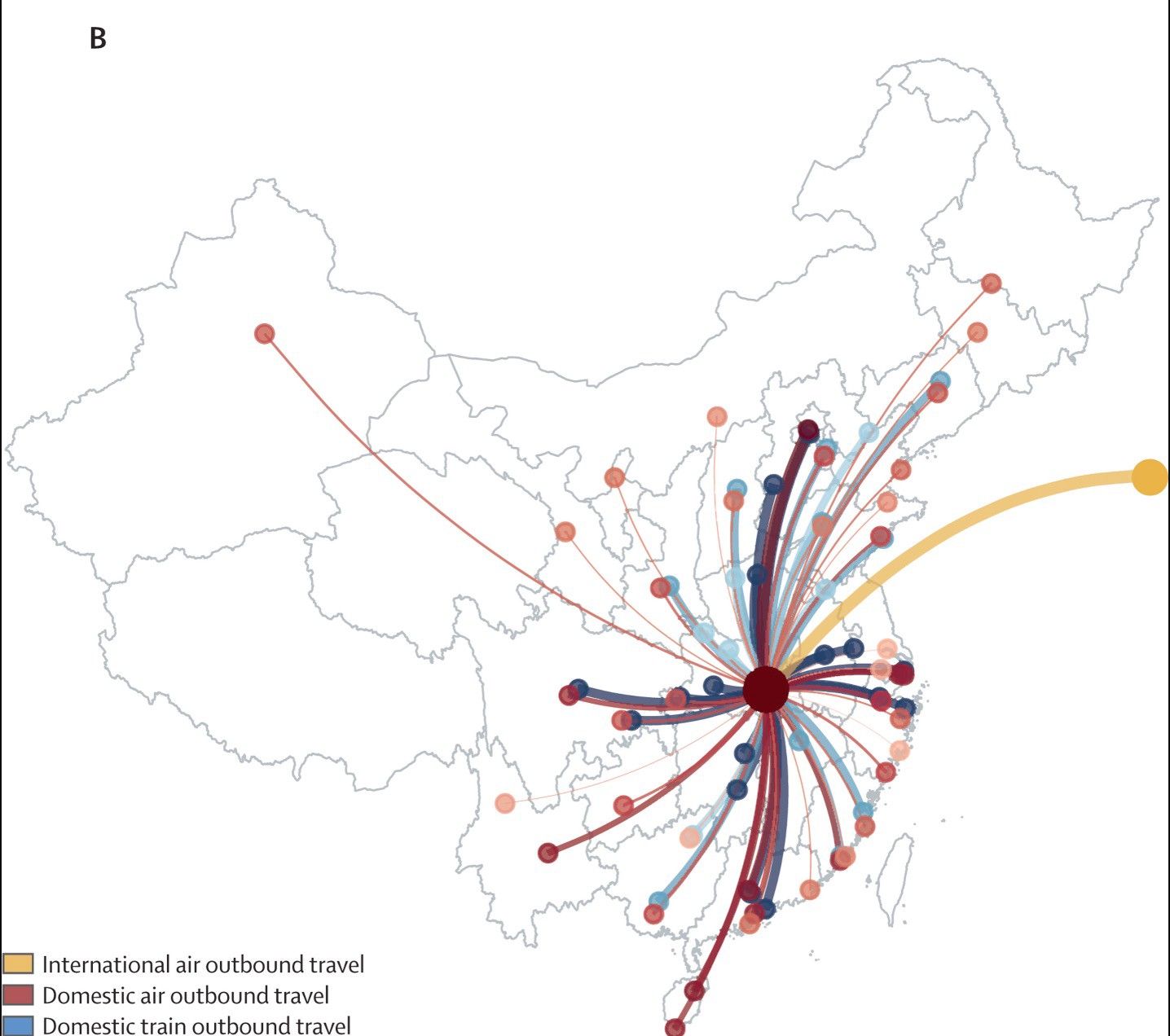COVID-19 May Infect Half The World
Don’t panic, but this is getting pandemic

According to epidemiology professor Marc Lipsitch, “40 to 70 percent of people around the world will be infected with the virus that causes COVID-19”. He is not an outlier. More and more scientists are calling this coronavirus a pandemic, one of potentially massive scale.
Prof Gabriel Leung, the chair of public health medicine at Hong Kong University has said the attack rate could go as high as 60%.
So can we go from the current 80,000 cases to 3 billion? Can we go from 2,700 deaths to tens of millions? Unfortunately, yes, we could.
Why?
COVID-19 is, in many ways, a goldilocks virus. Not too deadly, not too nice. At a roughly 2% kill-rate, it’s far less lethal than SARS (10%) or MERS (37%). However, that’s not a good thing. Because it doesn’t kill many hosts, COVID-19 is able to spread to a much larger base. The end result is that it’s already killed more than those two viruses combined.
COVID-19 also spread very easily. There’s an R0 (R-nought) value in epidemiology. This is, very roughly, the number of people each sick person infects. This is complicated, but you can see what it kinda means here:

If each person was infecting 2.3 people (the red line), we should have 300,000 cases now (by February 24th), and we don’t. We have just over 80,000 reported. So that would suggest an R0 close to 1.5 (the orange line). Or does it?
The fact is that we could have 300,000 cases right now. We don’t know. An outbreak of a ‘weak’ virus like could be like an iceberg, though that is debated. You see the dead and the obvious cases, but there can be a whole bunch of weak or asymptomatic cases spreading invisibly.
Take Iran. Iran is reporting 61 cases and 12 deaths, for a kill-rate of 20%. This is obviously wrong. It’s quite possible that Iran has 600 cases, not 60.
For a sense of how much COVID-19 can spread, the Japanese government conducted a grotesque experiment. They ‘quarantined’ sick and healthy people together aboard the Diamond Princess cruise ship. In this human buffet, infections rapidly spiked to over 700 starting from 10 and likely just one. As you can see, this is a highly contagious disease.
The big problem is that it seems to take very few initial cases for a local epidemic to spread. The surge of cases in South Korea and Italy have seemingly come out of nowhere. As Dr. Leung et al said in their paper,
“Independent self-sustaining outbreaks [of 2019-nCoV] in major cities globally could become inevitable because of substantial exportation of pre-symptomatic cases,” (The Lancet).

How?
How did this happen? Wuhan, the center of the outbreak has been effectively quarantined, isolating an unprecedented 50 million people with restrictions on movement for over half a billion. This should have contained the virus in China, shouldn’t it?
Well, the problem was timing. By the time you’re quarantining 50 million people, the cat is already out of the bag. China had a few precious weeks to nip this in the bud, and they wasted most of it being a dictatorship.
The disease likely began in November 2019 and was known and reported in December, but China didn’t begin containment efforts till late January. Indeed, the authoritarian Chinese government devoted more effort to containing whistleblowing doctors than the actual virus.
Up until January 20th, it was business as usual during the largest human migration in the world — the Chinese New Year. In fact, on January 19th the government hosted a 40,000 person outdoor banquet in Wuhan. You could not think of a better way and time to spread the disease, and those weeks of delay are costing us now.
Zeynep Tufekci likens this weakness of authoritarian governments to a body without pain.
An Orwellian surveillance-based system would be overwhelming and repressive, as it is now in China, but it would also be similar to losing sensation in parts of one’s body due to nerve injuries. Without the pain to warn the brain, the hand stays on the hot stove, unaware of the damage to the flesh until it’s too late. (The Atlantic)
Baked in the Wuhan stove, disseminated with Chinese New Year, the cases are now likely too much to contain. By the time you’re restricting movement for half your population, containment has already failed. At that point, it’s just a delaying tactic. In that sense, the siege of Wuhan has worked. Cases started to slow in China and seemed flat in the rest of the world. But this remained a delay, not an end.
The fact is that Wuhan was a major city, feeding into other major Chinese cities, all of them deeply connected with the world. The gate wasn’t closed soon enough and so here we are. On the brink of pandemic.
Pandemic
A pandemic is the worldwide spread of a new disease. Note that this isn’t a reference to how bad the disease is. As Lipsitch clarifies, “It’s likely that many will have mild disease, or may be asymptomatic,” (The Atlantic).
The WHO has not declared a pandemic, but cases are spreading to countries and they seem self-sustaining. At some point, containment is out and managing the outbreak is all there is. This leads to two scenarios.
We Just Live With This
We already live with four coronaviruses that cause mild colds.
“I can imagine a scenario where this becomes a fifth endemic human coronavirus,” said Stephen Morse of Columbia University’s Mailman School of Public Health, an epidemiologist and expert on emerging infectious diseases. “We don’t pay much attention to them because they’re so mundane,” especially compared to seasonal flu. (STAT News)
The trouble is that the flu has a kill-rate of 0.1%. Even if COVID-19 ends up at just 1%, that’s still 10 times worse.
We Just Live With This, But Seasonally
The other scenario is that COVID-19 becomes a seasonal virus, like the flu.
I think this virus is probably with us beyond this season, beyond this year, and I think eventually the virus will find a foothold and we’ll get community based transmission and you can start to think about it like seasonal flu. The only difference is we don’t understand this virus. (Dr. Robert Redfield, Director, CDC)
The odds of this scenario are pretty good. We may be able to contain instances down to near zero, but COVID-19 will keep coming back. This would lead to some immunity for exposed people, and possibly a weaker virus that learns to live with us better, but it would still be a catastrophic pandemic, especially in the first instance, ie, now.
The number of infected would just run so high that a 0.5% or 1% kill rate would be millions of people. Tens of millions.
Of course, there is one important thing to remember, as the WHO pointed out in a media briefing on February 17
All predictions are important. Most predictions are wrong. And I think we must be careful with that. (Dr. Michael Ryan, Executive Director, WHO Health Emergencies Programme)
The Human Toll
This is something that isn’t covered too much, but what does this mean, on a human level? If 40–70% of the world gets infected, that means that you’re likely to get the coronavirus. Or someone close to you.
If you watch the prescient series Pandemic on Netflix, what sticks out is not the individual impact of a disease like this, but its impact at scale. It’s not that individual cases are unmanageable, it’s that so many cases at once break health systems and overwhelm hospitals.
Also, at some point, the human cost of travel blockades becomes greater than the benefits. As they are proven to only delay infections, at some point they must be lifted, but who knows how that plays out politically. The fact is that economic downturns also kill people, and markets are already bracing for a hit. Daily wage earners, small businesses, the poor — many of them are already down.
Many brave people have put up a heroic delaying action, but now time is running out. They bought us time to prepare, to protect our medical workers, to get supplied, but unfortunately, the political language has been about avoiding this disease altogether. Which I don’t think is going to happen.
COVID-19 is a killer cold, and winter is coming. The best thing we can do now is prepare, resist the urge to close up, and get ready to fight this global pandemic together.